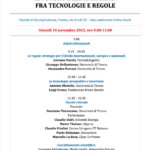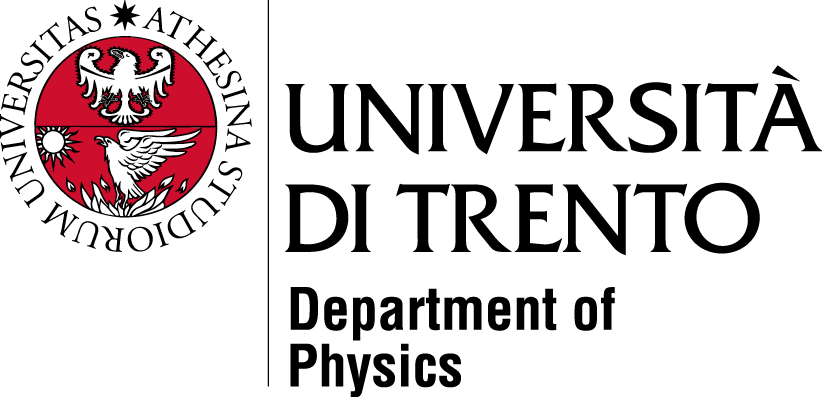A Quantum of Matter – 04 May 2022, 16.30
A multiscale assessment of DNA damage by particle radiation
Lorenzo Petrolli
Dipartimento di Fisica, Università di Trento
Aula B109 – Polo Ferrari (Povo 2), Povo
Abstract
The mutation/deletion of the hereditary material in the cell nuclei is a chronic biochemical hazard; in fact, nuclear DNA faces tens of lesions from metabolic intermediates, hydrolytic reactions and external sources a minute. Double strand breaks (DSB), i.e., the twofold cleft of the DNA helix over both strands, are cytotoxic fractures of the chromatin fold and a detrimental outcome associated with the irradiation of cell nuclei [1]. The in silico assessments of DNA lesions by means of radiations define DSBs via “coarse” criteria – that is, within an arbitrary distance of the two clefts. However, the diverse DSB motifs account for unique contact interfaces between the DNA termini, thus modulating the subsequent dynamics of the lesion sites. Moreover, it is reckoned that far-distanced DSBs may not fracture the broken DNA moieties by thermal dissociation effectively, in the absence of excess external stimuli [2].
We have tackled the assessment of the distribution of DSB motifs in a chromatin-like fold and the mechanical strain enforced by blunt DSBs, by means of Monte-Carlo track structure and classical molecular dynamics techniques. We thus infer that i) a Poisson fit describes the spectrum of DSB motifs by the direct effect of accelerated hydrogen ions, within a Bragg peak-relevant energy range (500 keV – 5 MeV), and observe a bias towards short-distanced, staggered DSBs [3]; ii) the nucleosome fold, i.e. the elemental unit of the chromatin framework, exerts an excess kinetic barrier towards the thermal disruption of DSBs, mediated by the contact interface between DNA and the core histone fold. We remark that in the absence of data in vitro and/or in vivo, the in silico inferences on the thermal and mechanical resilience of DNA lesions are as reliable as the molecular mechanics (MM) force fields underneath. In fact, it is debated whether all-atom force fields and water models overestimate the force of the intermolecular contacts and over-stabilize the DNA double helix [4].
[1] J. F. Ward, Progress in Nucleic Acid Research and Molecular Biology 35, 95-125 (1988).
[2] F. Landuzzi et al., Physical Chemistry Chemical Physics 19, 14641-14651 (2017).
[3] L. Petrolli et al., Frontiers in Physics 8, 576284 (2020)
[4] J. Yoo et al., Current Opinion in Structural Biology 64, 88-96 (2020).
Who is Lorenzo Petrolli?
Lorenzo Petrolli has been awarded a PhD in Physics in 2022 at the University of Trento. His research activity focuses on the in silico assessment of DNA lesions via both Monte Carlo track structure and classic molecular dynamics techniques.




